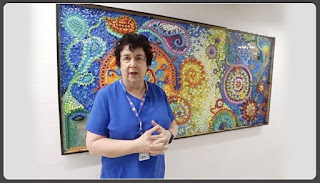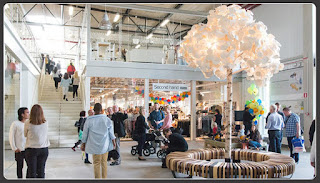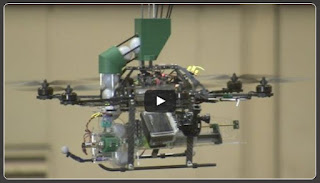 |
| Treehugger.com |
Ever wonder what happens to the many plastic parts used to maintain hospital tools when they’re no longer needed? For one healthcare employee, they become a work of art.
Tilda Shalof was an ICU nurse at Toronto General Hospital for nearly three decades, and in that time, she collected hundreds of lids, levers, screws, and connectors of various colours. Why? Because none of them were true biomedical waste.
Having been removed from their tools before use and otherwise untouched, Shalof decided to bring the pieces home and put them to use again. With the help of two experienced artists, she created a thirty-six square foot mosaic of reds, blues, greens, yellows, purples, and oranges. The finished product has been mounted on the wall of Shalof’s old workplace.
The nurse-turned-radiologist even took the time to describe what the parts were all for. Everything from blood culture case lids to adrenaline injection tops make up the mosaic, all colour coded differently. The artwork, according to Shalof, is a sort of farewell to the many patients she tended to at Toronto General Hospital.
Shalof’s new radiology career is at a different hospital, and though she keeps on collecting pieces, she writes books in her spare time, too. In more ways than one, she has managed to turn waste into wonder and keep her creativity flowing.
Tilda Shalof was an ICU nurse at Toronto General Hospital for nearly three decades, and in that time, she collected hundreds of lids, levers, screws, and connectors of various colours. Why? Because none of them were true biomedical waste.
Having been removed from their tools before use and otherwise untouched, Shalof decided to bring the pieces home and put them to use again. With the help of two experienced artists, she created a thirty-six square foot mosaic of reds, blues, greens, yellows, purples, and oranges. The finished product has been mounted on the wall of Shalof’s old workplace.
The nurse-turned-radiologist even took the time to describe what the parts were all for. Everything from blood culture case lids to adrenaline injection tops make up the mosaic, all colour coded differently. The artwork, according to Shalof, is a sort of farewell to the many patients she tended to at Toronto General Hospital.
Shalof’s new radiology career is at a different hospital, and though she keeps on collecting pieces, she writes books in her spare time, too. In more ways than one, she has managed to turn waste into wonder and keep her creativity flowing.





